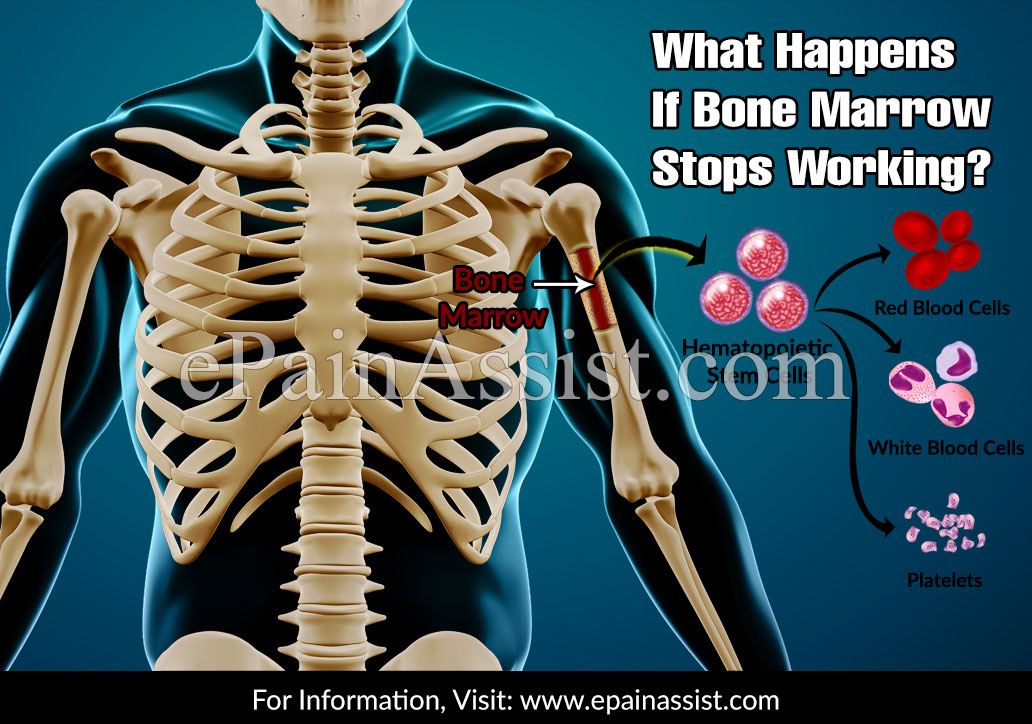What is Bone Marrow?
Bone marrow is gelatinous, soft connective tissue, which is present within the medullary cavities that are present in the center of the bone shafts. Bone marrow is a part of the lymphatic system and is of two types: Red bone marrow (myeloid tissue) and yellow bone marrow. Both the types of bone marrow are extremely vascular and filled with numerous capillaries and blood vessels.
What is the Function of Bone Marrow?
The primary function of bone marrow is production of blood cells and storing fat. More than 200 billion new blood cells are produced everyday by bone marrow and majority of the blood cells of the body develop from bone marrow cells. The bone marrow is extremely vascularized, which means that it is enriched with large number of blood vessels. There are 2 types of bone marrow. The red bone marrow, which is the major type of bone marrow present from the child’s birth to its early adolescence. As we grow, large amount of red bone marrow gets replaced with yellow marrow. The red bone marrow consists of hematopoietic stem cells, the function of which is production of two other forms of stem cells: lymphoid stem cells and myeloid stem cells. The stem cells further develop into white blood cells, red blood cells or platelets. Myeloid Stem Cells develop into red blood cells, platelets, myeloblast cells or mast cells. Myeloblast cells further develop into monocyte and granulocyte white blood cells.
Function of Hematopoietic Stem Cells in Red Bone Marrow: There are two main types of stem cells present in the bone marrow. One is hematopoietic stem cells that are present in the red marrow and the function of which is production of blood cells.
Function of Mesenchymal Stem Cells in Bone Marrow: Bone marrow mesenchymal stem cells, also known as multipotent stromal cells, are responsible for producing the non-blood cell components of the bone marrow which includes fat, fibrous connective tissue, cartilage, bone cells and stromal cells, which support the blood formation.

What Happens If Bone Marrow Stops Working?
Bone marrow stops working when there is any bone marrow disease in which case the bone marrow stops functioning or starts to produce abnormal blood cells.
When the bone marrow stops working, the red blood cells get affected which are responsible for transporting oxygen from lungs to the entire body and carrying back carbon dioxide from the body to the lungs. When the bone marrow stops working and the red blood cells are involved, then it produces symptoms such as anemia, weakness, tiredness, headaches and breathlessness.
When the bone marrow stops working, the white blood cells can also get affected. The function of white blood cells is fighting against infection and any disturbance in the white blood cells due to malfunctioning of bone marrow produces symptoms, such as fever and infections.
If the platelets get affected when the bone marrow stops working, then the patient experiences symptoms such as the nosebleeds, bruising, gum bleeding and increased menstrual bleeding.
Treatment for Bone Marrow That is Not Functioning
Treatment if the bone marrow is not functioning properly depends on the degree of the bone marrow failure disease. The first line of treatment in such cases consists of blood transfusion. Another treatment option is bone marrow transplantation.
- Heissig B, Hattori K, Dias S, et al. Recruitment of stem and progenitor cells from the bone marrow niche requires MMP-9 mediated release of kit-ligand. Cell. 2002;109(5):625-637. doi: 10.1016/s0092-8674(02)00754-7. (https://pubmed.ncbi.nlm.nih.gov/12062103/)
- Orkin SH, Zon LI. Hematopoiesis: an evolving paradigm for stem cell biology. Cell. 2008;132(4):631-644. doi: 10.1016/j.cell.2008.01.025. (https://pubmed.ncbi.nlm.nih.gov/18295581/)
- Morrison SJ, Scadden DT. The bone marrow niche for haematopoietic stem cells. Nature. 2014;505(7483):327-334. doi: 10.1038/nature12984. (https://pubmed.ncbi.nlm.nih.gov/24429631/)
- Jaiswal S, Jamieson CH, Pang WW, et al. CD47 is upregulated on circulating hematopoietic stem cells and leukemia cells to avoid phagocytosis. Cell. 2009;138(2):271-285. doi: 10.1016/j.cell.2009.05.046. (https://pubmed.ncbi.nlm.nih.gov/19632178/)
- Shiozawa Y, Jung Y, Ziegler AM, et al. Erythropoietin couples hematopoiesis with bone formation. PLoS One. 2010;5(5):e10853. doi: 10.1371/journal.pone.0010853. (https://pubmed.ncbi.nlm.nih.gov/20502715/)
Also Read:
